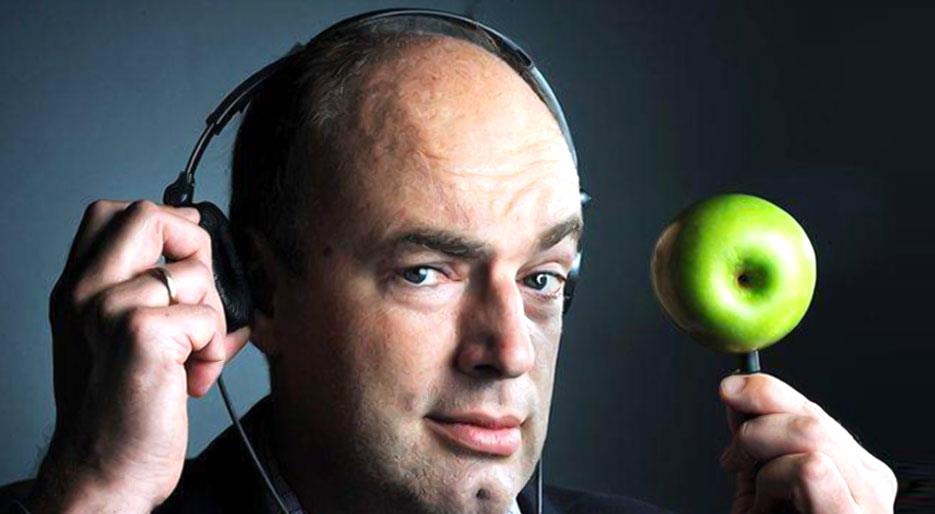Multisensory Flavour Perception: Insights for/from the Spatial Senses
Head of the Crossmodal Research Laboratory, Oxford University

Food is both fundamental to our survival and fun to study. Furthermore, there is nothing that gets your brain going quite like the sight/smell of one’s favourite food when hungry.[1] And, as the eminent British biologist J. Z. Young once noted, it is perhaps no coincidence that the mouth and the brain lie so close together in most species.[2] No wonder then that the brain rapidly estimates the energy-density of potential food sources in the environment and devotes our limited attentional resources accordingly.[3] At the same time, however, it is much harder, practically-speaking, to study flavour (i.e., the chemical senses) than it is to study the spatial senses of vision, hearing, and touch. This means that insights/theoretical frameworks into multisensory flavour perception may come more easily from studying the spatial senses (think sensory dominance and Bayesian causal inference, or the notion of super- and sub-additive interactions) than from studying flavour perception directly.
One might also question whether any unique insights about multisensory perception have emerged from the study of the chemical senses. In this talk, I will suggest that the phenomenon of ‘oral referral’ has no equivalent in the spatial senses,[4] and that gustatory-olfactory integration does exhibit some special properties (such as when smells become ‘sweet’).[5] There are also challenging philosophical questions here around the very definition of flavour itself, and which senses are constitutive versus ‘merely’ modulatory of this most multisensory of our everyday experiences.[6] Ultimately, I want to argue that our understanding of multisensory perception, both in the case of the integration of the chemical senses, and when it comes to the spatial senses, will likely benefit through the incorporation of the study of flavour perception into the broader scope of multisensory research.
[1] Wang, G.-J., Volkow, N. D., Telang, F., Jayne, M., Ma, J., Rao, M., Zhu, W., Wong, C. T., Pappas, N. R., Geliebter, A., et al. (2004). Exposure to appetitive food stimuli markedly activates the human brain. NeuroImage, 212, 1790-1797.
[2] Young, J. Z. (1968). Influence of the mouth on the evolution of the brain. In P. Person (Ed.), Biology of the mouth: A symposium presented at the Washington meeting of the American Association for the Advancement of Science, 29-30 December 1966 (pp. 21-35). Washington, DC: American Association for the Advancement of Science.
[3] Sawada, R., Sato, W., Toichi, M., & Fushiki, T. (2017). Fat content modulates rapid detection of food: A visual search study using fast food and Japanese diet. Frontiers in Psychology, 8:1033.
[4] Spence, C. (2016). Oral referral: On the mislocalization of odours to the mouth. Food Quality & Preference, 50, 117-128.
[5] Auvray, M., & Spence, C. (2008). The multisensory perception of flavor. Consciousness and Cognition, 17, 1016-1031.
[6] Spence, C., Smith, B., & Auvray, M. (2015). Confusing tastes and flavours. In D. Stokes, M. Matthen, & S. Biggs (Eds.), Perception and its modalities (pp. 247-274). Oxford, UK: Oxford University Press.
About the speaker: Professor Charles Spence is the head of the Crossmodal Research Laboratory in the Psychology Department of Oxford University. He is interested in our brains process information from our different senses to form the extraordinarily rich multisensory experiences that fill our daily lives. His research focuses on how a better understanding of the human mind will lead to the better design of multisensory foods, products, interfaces, and environments in the future and has major implications for the design everything from household products to mobile phones, and from the food we eat to the places in which we work and live. Charles has advised multinational companies on aspects of multisensory design, packaging, and branding, and has conducted research on human-computer interaction issues on the European Space Shuttle. He is currently working on problems associated with the design of foods that maximally stimulate the senses. He has been awarded the 10th Experimental Psychology Society Prize, the British Psychology Society: Cognitive Section Award, the Paul Bertelson Award, and the Friedrich Wilhelm Bessel Research Award from the Alexander von Humboldt Foundation in Germany, not to mention the 2008 IG Nobel prize for nutrition, for his groundbreaking work on the ‘sonic crisp’! He is the author of “Gastrophysics: the new science of eating”, “The Perfect Meal: the Multisensory Science of Food and Dining” (with Betina Piqueras-Fiszman), “In touch with the Future: the sense of touch from cognitive neuroscience to virtual reality” (with Alberto Gallace) and “The Multisensory Driver: implications for ergonomic car interface design” (with Cristy Ho).
